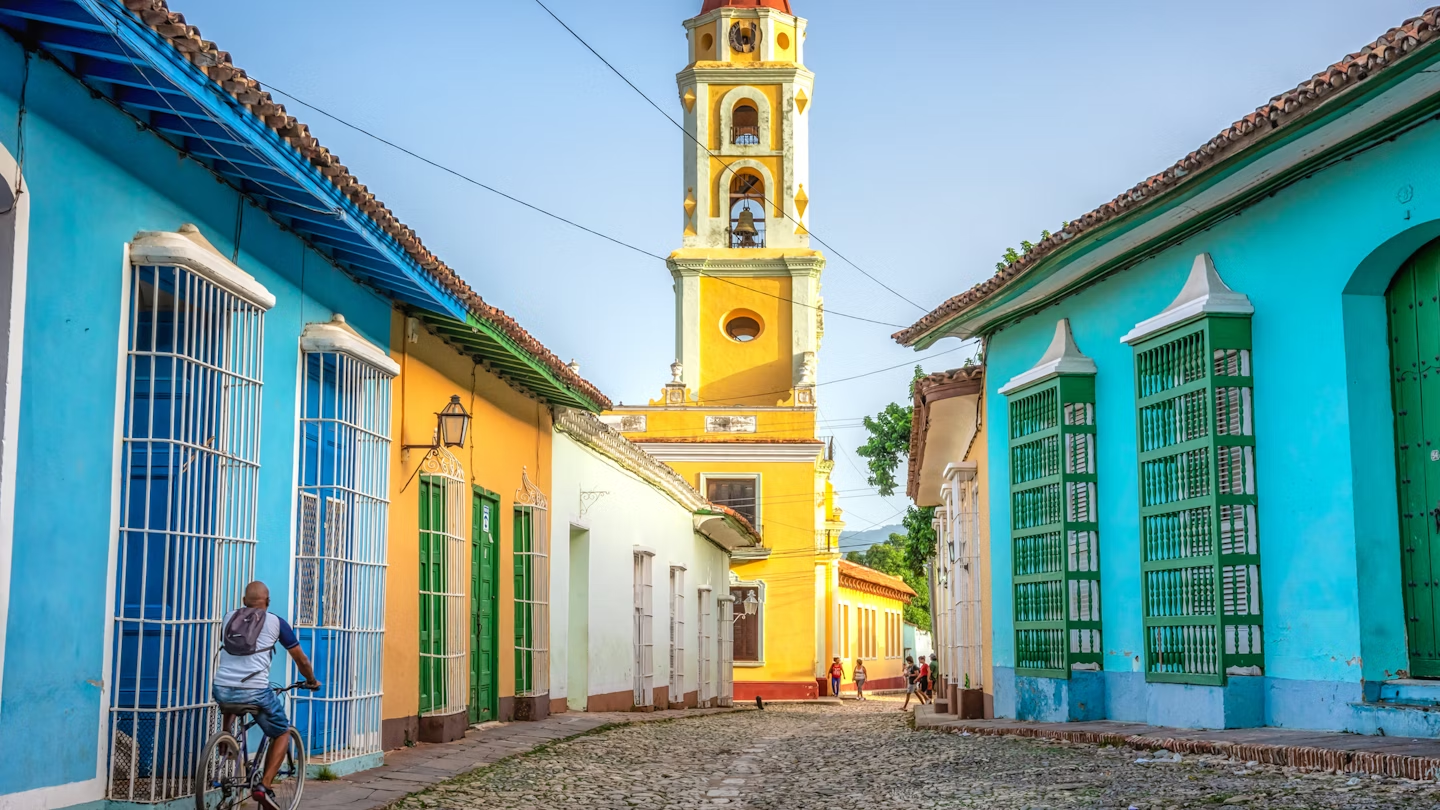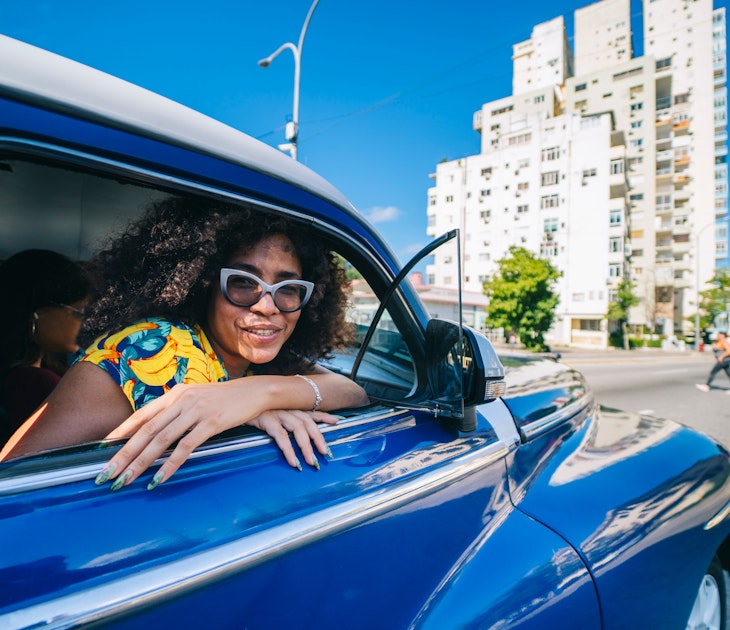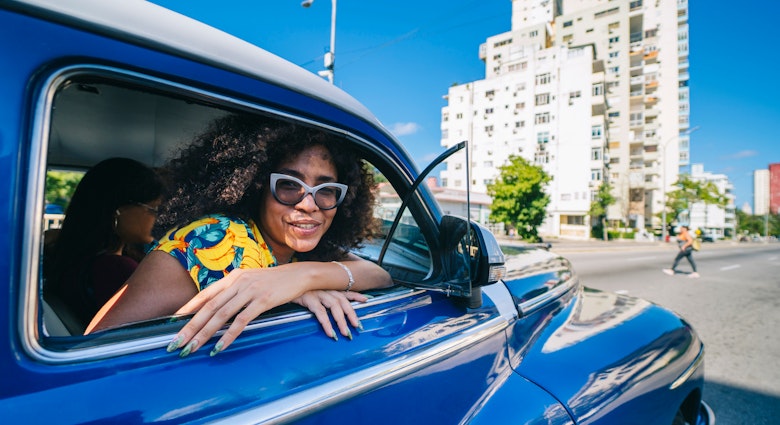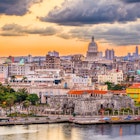At first glance, Cuba has a transportation network to make traveling around the country an easy ride, including an extensive train system and 900km (560 miles) of highways that link up towns throughout the island.
But getting around Cuba isn’t easy. Public transport isn’t well designed for visitors – you need to book ahead or know the intricacies of local transportation. Bumpy, potholed roads and nearly nonexistent signage are the norm. Buses are the best option for inter-provincial travel, while hopping in one of the ubiquitous classic cars is great for a day tour.
These top tips will give you the know-how to make the most of your journey around Cuba.

The bus is the best way to travel around Cuba
Connecting most destinations of interest to tourists, buses are the best option for getting around Cuba. Bus travel in Cuba is generally safe, reliable (considering Cuban standards for punctuality!) and affordable compared to rental cars or taxis.
Víazul is the go-to bus company for travelers, with air-conditioned buses and extensive coverage of the island’s most popular spots. Online booking is available through the website, though unreliable booking systems mean it’s better to book directly at the Víazul bus stations at least two hours before the estimated time of departure. During peak season (July and August, plus November to March), it’s best to make reservations days in advance, especially for popular routes such as Havana to Viñales, Havana to Varadero and Santiago de Cuba to Baracoa.
To book bus tickets, all travelers must present an identification document such as a passport. Payments are accepted using only non-US-based cards – tourists cannot pay in cash.
Tip for bus travel in Cuba: Pack a jacket because the air-conditioning on buses tends to be chilly, and temperature controls for passengers are nonexistent.
Renting a car is not the easiest option in Cuba
Renting a car in Cuba will give you the freedom to discover the island’s top places at your own pace. However, driving in Cuba is an adventure of its own: road conditions can be bad, signage is poor or simply not there at all, and the road rules are ambiguous.
Car rental costs in Cuba start at US$70 per day for a medium-sized car in low season, plus extra fees including insurance and liability waiver. If you pick up the rental car at the airport, there’s an additional fee of US$25. You’ll have to make a refundable “guarantee deposit” of about US$175 that will be returned at drop-off if you have no tickets or issues with the car. Your home license is valid to drive in Cuba. Many travel agencies include car rental services if you don’t want to arrange it yourself.
Tips for renting a car in Cuba: Google Maps and Maps.me work well in Cuba for navigation. If you’re not staying at a hotel or homestay with a garage, it's worth asking your accommodations for a parqueador (car keeper). This neighbor or guardian will watch your car for the night for a small fee (US$5–10) so you avoid losing the guarantee deposit for the petty theft of mirrors or antennas.

There are two types of taxi services, and rates are similar
Cuba has two types of taxis: yellow taxis (which come in a number of vehicle makes and sizes) and the classic convertibles that every tourist takes a selfie with. Yellow cabs belong to state-owned agencies or private drivers, but the rates are similar. If you’re traveling in a small group, you can book day tours or inter-provincial travels in an almendrón (the local name for the old American cars because of their almond-like shape). Fancier classic convertible cars – with AC, leathery seats and painted in bright colors – are available for rides by the hour if rented within the city. Always agree on a fare before renting one.
In Havana, you’ll spot yellow minivans and minibuses (known as ruteros and gazelas) that are used by locals and take payment in Cuban pesos. They operate on set routes from 9am to 7pm and routes anywhere in the city after hours.
A growing number of rideshare services are available, including Bajanda.
Cuba is surprisingly bike friendly
With a history of gas shortages and a low number of cars per capita, Cuba has been a bike-friendly destination for decades. A 1m-wide (3ft) bike lane on the right side of the road is reserved for bicycles and motorcycles, even on highways, though expect some chaotic “freedom” of movement in provincial cities outside Havana.
Look out for poncheras (puncture repair stalls) if you need to fix a flat or air up your tires. These stalls are widespread across the country and even in small towns you’ll find an improvised ponchera. Spare parts are scarce, but Cubans are known to be innovators by necessity, so you’ll hardly stop moving if something can be assembled with the materials on hand.
In recent years, Cuba has seen a growing number of bike rental outfits, with Cubyke, Citykleta and Veló Cuba being the most popular.

Train services in Cuba aren't reliable (or comfortable)
Despite its extensive network, trains are not generally a good way to get around Cuba. Even locals avoid using them when an alternative means of transportation is available. New Chinese-built cars entered service in 2019, but the schedule is still unreliable, most trains are slow and facilities are appallingly lacking in comfort.
Havana is the connection center, linking to most provincial capitals of Cuba from its La Coubre station on the southwestern side of Habana Vieja. Four train routes run every fourth day towards Santiago de Cuba, Holguín, Guantánamo and Bayamo–Manzanillo. To purchase tickets, go to the window at most train stations or ask for the “Lista de Espera” (“Waiting List”) window for trains leaving immediately. You’ll need to show your passport when purchasing tickets.
Tip for train travel in Cuba: Always check for an updated list of departures directly at the station where you’re hopping aboard because schedules are subject to change without notice.
Boat services are limited
Two major ferry shuttles operate in Cuba. One runs from Habana Vieja to Casablanca and Regla in Havana, leaving every 15 to 20 minutes, and the other is a catamaran service connecting Surgidero de Batabanó to Nueva Gerona in Isla de la Juventud. Book at least a day in advance with your passport at the Havana bus station in Avenida 26 and Zoológico, Plaza de la Revolución. Be aware of cancelations during hurricane season (June to November). In Holguín, Cayo Saetía is only reachable by boat, but to get there, you’ll need to book with an official travel agency.
Domestic flights are not a strong option
Even before the pandemic and its associated economic crisis, Cuba did not have a reliable fleet of airplanes, and the schedule of flights within the island was irregular and delays were common.
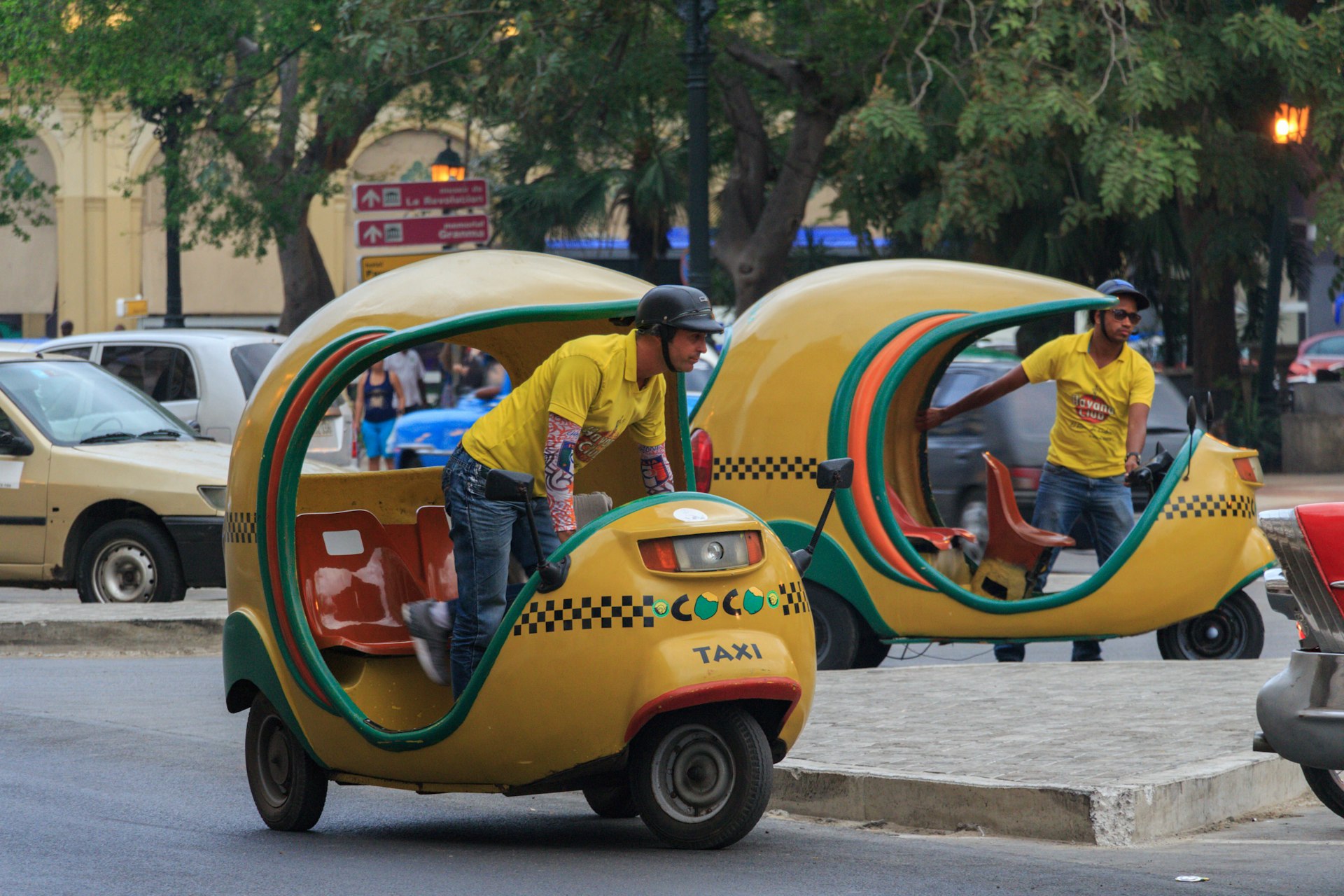
Local transport includes bici-taxis (and horse-drawn carts)
Bici-taxis (tricycles with a double seat behind the driver) are a popular means of transportation for getting around the downtown areas in Havana, Cienfuegos, Camagüey, Holguín and other cities. You’ll also spot fancy horse-drawn carts in the colonial cities of Havana, Cienfuegos, Bayamo and elsewhere. Trencito (a small toy-like train) tours run in Havana’s and Cienfuegos’ malecones (sea drives), and also in Varadero and Santiago de Cuba.
Tip for taking local transport in Cuba: Always agree on a fare before getting into any mode of transportation to get around locally.
Hop-on hop-off tourist buses operate in major cities
Most of the popular cities in Cuba have tours that use hop-on hop-off buses, connecting the hotels with the city’s main sights. Havana, Varadero, Santiago de Cuba, Cayo Coco and Guillermo, and Cayo Santa María use double-decker open-topped buses to drive visitors around.
Accessible transportation in Cuba
Cubans are helpful and likely to assist visitors, but accessible transportation in Cuba is still in its infancy. Curb ramps are common in downtown Havana but rare in provincial capitals. Parking areas don’t contain spaces for drivers with disabilities, and buses and taxis aren’t wheelchair accessible.
Download Lonely Planet's free Accessible Travel guide.

